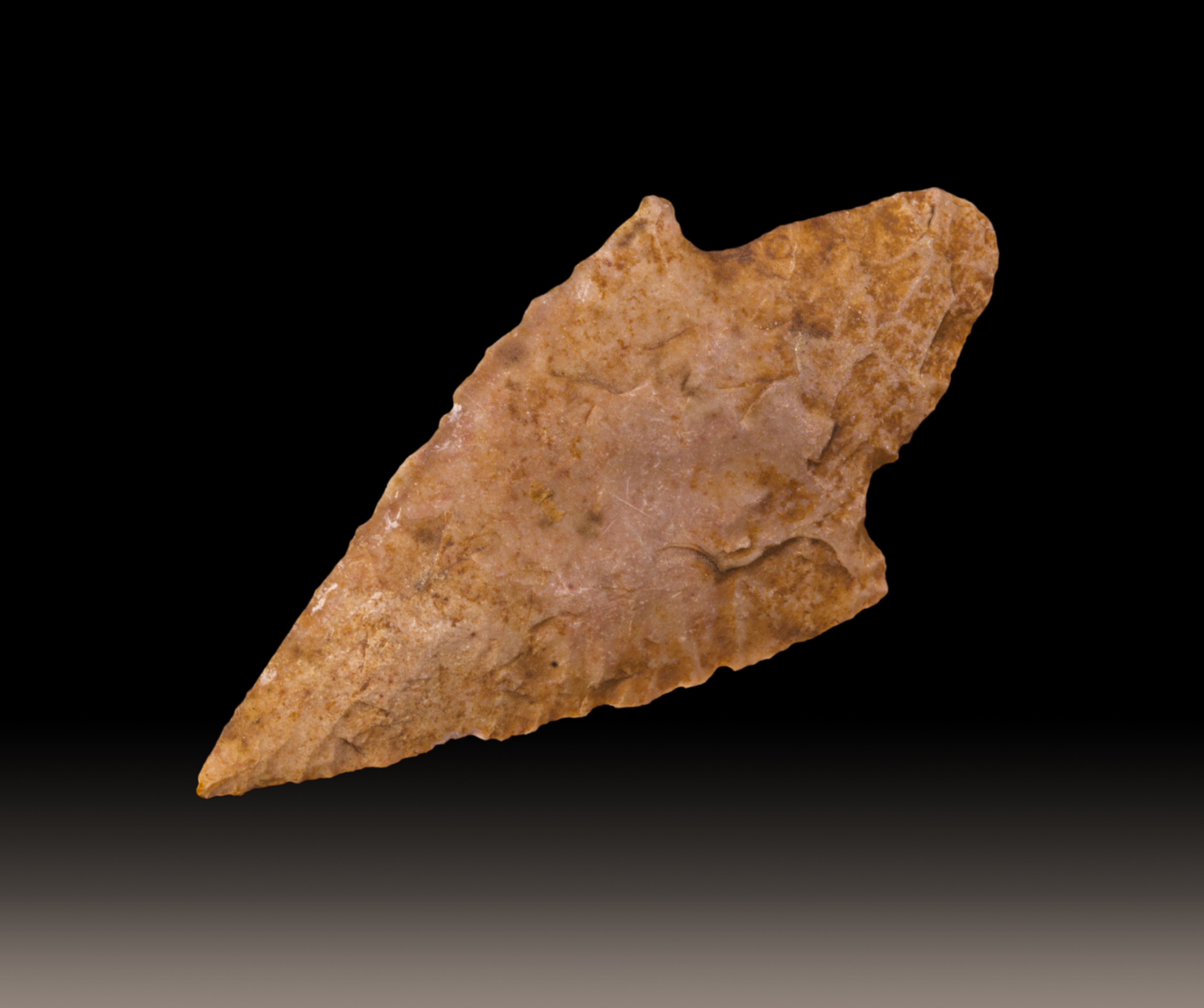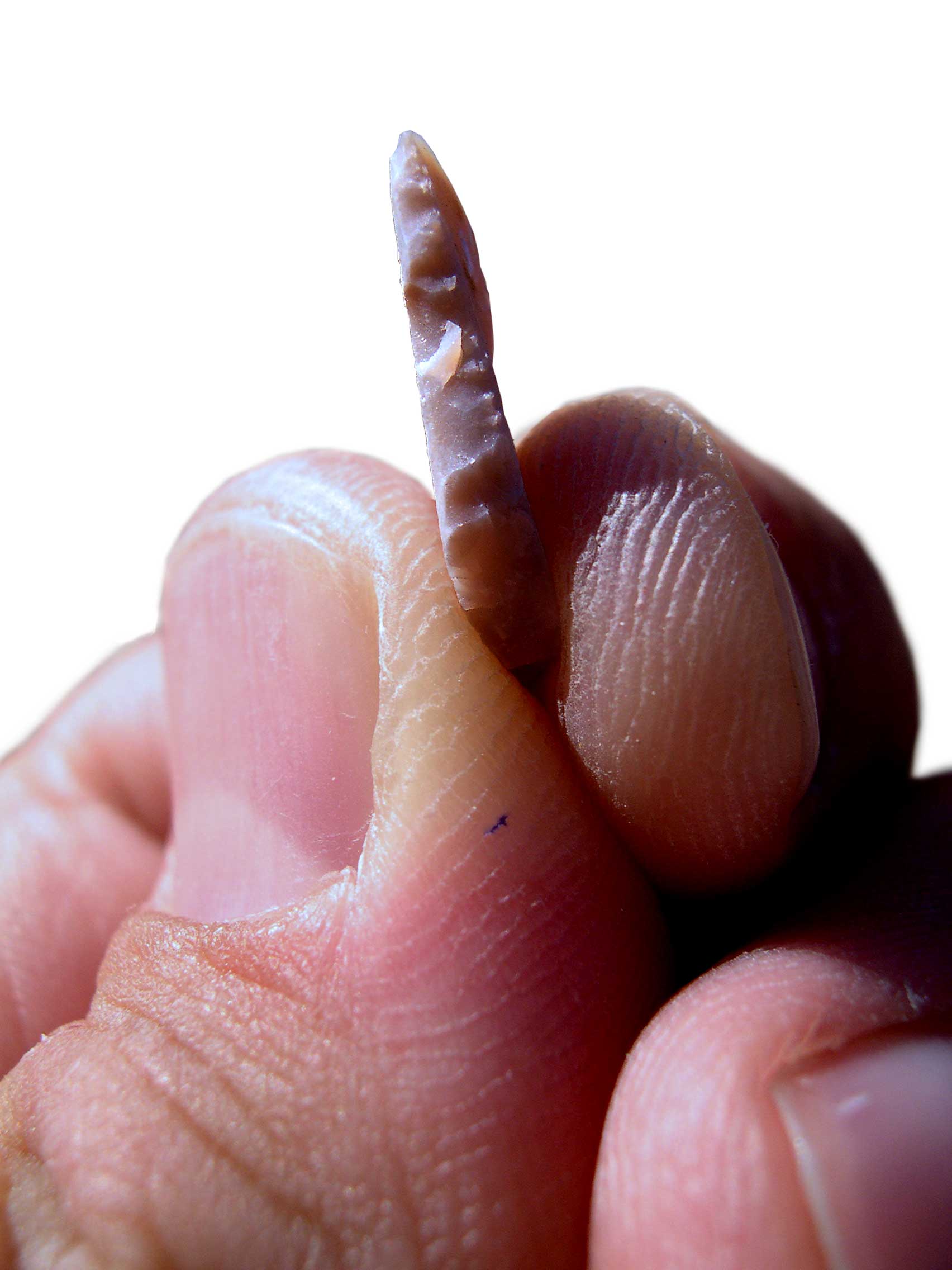|
Bir Hassan
The Sands of Beirut were a series of archaeological sites located on the coastline south of Beirut in Lebanon. Description The Sands were a complex of nearly 20 prehistoric sites that were destroyed due to building operations using the soft sandstone in constructing the city of Beirut and Beirut Airport. The large number of open air sites provided a wealth of flint relics from various periods including Natufian remains, unstratified but suggested to date between c. 10000 BC to c 8000 BC. Finds included sickles used for harvesting wild cereals as just prior to the agricultural revolution. The transition into the neolithic is well documented with Khiamian sites also being represented in the Sands. Evidence of pre-Natufian Kebaran occupation was also found. The materials recovered are now held by the Museum of Lebanese Prehistory part of the Saint Joseph University. It is one of the few sites showing signs of real village occupation in the late pleistocene. The first flints were fo ... [...More Info...] [...Related Items...] OR: [Wikipedia] [Google] [Baidu] |
Beirut
Beirut, french: Beyrouth is the capital and largest city of Lebanon. , Greater Beirut has a population of 2.5 million, which makes it the third-largest city in the Levant region. The city is situated on a peninsula at the midpoint of Lebanon's Mediterranean coast. Beirut has been inhabited for more than 5,000 years, and was one of Phoenicia's most prominent city states, making it one of the oldest cities in the world (see Berytus). The first historical mention of Beirut is found in the Amarna letters from the New Kingdom of Egypt, which date to the 14th century BC. Beirut is Lebanon's seat of government and plays a central role in the Lebanese economy, with many banks and corporations based in the city. Beirut is an important seaport for the country and region, and rated a Beta + World City by the Globalization and World Cities Research Network. Beirut was severely damaged by the Lebanese Civil War, the 2006 Lebanon War, and the 2020 massive explosion in the ... [...More Info...] [...Related Items...] OR: [Wikipedia] [Google] [Baidu] |
Lower Paleolithic
The Lower Paleolithic (or Lower Palaeolithic) is the earliest subdivision of the Paleolithic or Old Stone Age. It spans the time from around 3 million years ago when the first evidence for stone tool production and use by hominins appears in the current archaeological record, until around 300,000 years ago, spanning the Oldowan ("mode 1") and Acheulean ("mode 2") lithics industries. In African archaeology, the time period roughly corresponds to the Early Stone Age, the earliest finds dating back to 3.3 million years ago, with Lomekwian stone tool technology, spanning Mode 1 stone tool technology, which begins roughly 2.6 million years ago and ends between 400,000 and 250,000 years ago, with Mode 2 technology. The Middle Paleolithic followed the Lower Paleolithic and recorded the appearance of the more advanced prepared-core tool-making technologies such as the Mousterian. Whether the earliest control of fire by hominins dates to the Lower or to the Middle Paleolithic remai ... [...More Info...] [...Related Items...] OR: [Wikipedia] [Google] [Baidu] |
Ksar Akil Flake
Ksar Akil Flake is an oval type of Lithic flake with fine, regular teeth at frequent intervals. The flint tool is named after the archaeological site of Ksar Akil in Lebanon, where several examples were found and suggested to date to the late Upper Paleolithic. Two Ksar Akil Flakes are held by the National Museum of Beirut, marked as "level V", which had a base point at around below datum. Other examples are held by the Archaeological Museum of the American University of Beirut, Lorraine Copeland and some are also likely to be among the Ksar Akil material held in London. Five other examples are held in the Museum of Lebanese Prehistory found at Borj Barajne in the Sands of Beirut along with two worn examples discovered at Antelias cave Antelias Cave was a large cave located east of Antelias, northeast of Beirut close to the wadi of Ksar Akil. It was discovered by Heidenborg in 1833. Godefroy Zumoffen made an excavation in 1893, finding an Aurignacian industry amongst large ... [...More Info...] [...Related Items...] OR: [Wikipedia] [Google] [Baidu] |
Helwan Point
Helwan ( ar, حلوان ', , cop, ϩⲁⲗⲟⲩⲁⲛ, Halouan) is a city in Egypt and part of Greater Cairo, on the bank of the Nile, opposite the ruins of Memphis. Originally a southern suburb of Cairo, it served as the capital of the now defunct Helwan Governorate from April 2008 to April 2011, after which it was re-incorporated into the Cairo Governorate. The ''kism'' of Helwan had a population of 643,327 in the 2006 census.Central Agency for Public Mobilisation and Statistics, Population and Housing Census 2006, Population distribution by sex, gov: Cairo Retrieved on 2008-04-01. History The Helwan and Isnian cultures of the late |
Tang (tools)
A tang or shank is the back portion of the blade component of a tool where it extends into stock material or connects to a handle – as on a knife, sword, spear, arrowhead, chisel, file, coulter, pike, scythe, screwdriver, etc. One can classify various tang designs by their appearance, by the manner in which they attach to a handle, and by their length in relation to the handle. ''Nakago'' is the term in Japanese, used especially when referring to the tang of the katana or the wakizashi. Full vs partial tang A full tang extends the full length of the grip-portion of a handle, versus a ''partial'' tang which does not. A full tang may or may not be as wide as the handle itself, but will still run the full length of the handle. There are a wide variety of full and partial tang designs. In perhaps the most common design in full tang knives, the handle is cut in the shape of the tang and handle scales are then fastened to the tang by means of pins, screws, bolts, metal tubing, ... [...More Info...] [...Related Items...] OR: [Wikipedia] [Google] [Baidu] |
Arrowhead
An arrowhead or point is the usually sharpened and hardened tip of an arrow, which contributes a majority of the projectile mass and is responsible for impacting and penetrating a target, as well as to fulfill some special purposes such as signaling. The earliest arrowheads were made of stone and of organic materials; as human civilizations progressed, other alloy materials were used. Arrowheads are important archaeological artifacts; they are a subclass of projectile points. Modern enthusiasts still "produce over one million brand-new spear and arrow points per year". A craftman who manufactures arrowheads is called an arrowsmith.Paterson ''Encyclopaedia of Archery'' p. 20 History In the Stone Age, people used sharpened bone, flintknapped stones, flakes, and chips and bits of rock as weapons and tools. Such items remained in use throughout human civilization, with new materials used as time passed. As archaeological artifacts such objects are classed as projectile p ... [...More Info...] [...Related Items...] OR: [Wikipedia] [Google] [Baidu] |
Microlith
A microlith is a small Rock (geology), stone tool usually made of flint or chert and typically a centimetre or so in length and half a centimetre wide. They were made by humans from around 35,000 to 3,000 years ago, across Europe, Africa, Asia and Australia. The microliths were used in spear points and arrowheads. Microliths are produced from either a small blade (Microblade technology, microblade) or a larger blade-like piece of flint by abrupt or truncated retouch (lithics), retouching, which leaves a very typical piece of waste, called a microburin. The microliths themselves are sufficiently worked so as to be distinguishable from workshop waste or accidents. Two families of microliths are usually defined: laminar and geometric. An assemblage of microliths can be used to date an archeological site. Laminar microliths are slightly larger, and are associated with the end of the Upper Paleolithic and the beginning of the Epipaleolithic era; geometric microliths are characteristic ... [...More Info...] [...Related Items...] OR: [Wikipedia] [Google] [Baidu] |
Godefroy Zumoffen
Reverend Father Godefroy Zumoffen (1848 in France – 1928) was a French Jesuit archaeologist and geologist notable for his work on prehistory in Lebanon. He is known particularly for pioneering Lebanese archaeology, and for discovering several sites including the Antelias cave Antelias Cave was a large cave located east of Antelias, northeast of Beirut close to the wadi of Ksar Akil. It was discovered by Heidenborg in 1833. Godefroy Zumoffen made an excavation in 1893, finding an Aurignacian industry amongst large qua .... He produced the first geological map of Lebanon and authored a book about its prehistory, ''La Phénicie avant les phéniciens: l'âge de la pierre''. Notes References External links Biography (in French) - Lebanese Museum of Prehistory, Saint Joseph University Website {{DEFAULTSORT:Zumoffen, Godefroy 20th-century French Jesuits French Roman Catholic missionaries French archaeologists 1848 births 1928 deaths French geologists 19th-century ... [...More Info...] [...Related Items...] OR: [Wikipedia] [Google] [Baidu] |
Mesolithic
The Mesolithic (Greek: μέσος, ''mesos'' 'middle' + λίθος, ''lithos'' 'stone') or Middle Stone Age is the Old World archaeological period between the Upper Paleolithic and the Neolithic. The term Epipaleolithic is often used synonymously, especially for outside northern Europe, and for the corresponding period in the Levant and Caucasus. The Mesolithic has different time spans in different parts of Eurasia. It refers to the final period of hunter-gatherer cultures in Europe and Western Asia, between the end of the Last Glacial Maximum and the Neolithic Revolution. In Europe it spans roughly 15,000 to 5,000 BP; in Southwest Asia (the Epipalaeolithic Near East) roughly 20,000 to 10,000 BP. The term is less used of areas farther east, and not at all beyond Eurasia and North Africa. The type of culture associated with the Mesolithic varies between areas, but it is associated with a decline in the group hunting of large animals in favour of a broader hunter-g ... [...More Info...] [...Related Items...] OR: [Wikipedia] [Google] [Baidu] |
Bir Hassan Pick
The Sands of Beirut were a series of archaeological sites located on the coastline south of Beirut in Lebanon. Description The Sands were a complex of nearly 20 prehistoric sites that were destroyed due to building operations using the soft sandstone in constructing the city of Beirut and Beirut Airport. The large number of open air sites provided a wealth of flint relics from various periods including Natufian remains, unstratified but suggested to date between c. 10000 BC to c 8000 BC. Finds included sickles used for harvesting wild cereals as just prior to the agricultural revolution. The transition into the neolithic is well documented with Khiamian sites also being represented in the Sands. Evidence of pre-Natufian Kebaran occupation was also found. The materials recovered are now held by the Museum of Lebanese Prehistory part of the Saint Joseph University. It is one of the few sites showing signs of real village occupation in the late pleistocene. The first flints were f ... [...More Info...] [...Related Items...] OR: [Wikipedia] [Google] [Baidu] |
Emireh Points
Emiran culture was a culture that existed in the Levant (Lebanon, Palestine , Syria, Jordan, Israel , and Arabia between the Middle Paleolithic and the Upper Paleolithic periods. It is the oldest known of the Upper Paleolithic cultures and remains an enigma as it transitionally has no clear African progenitor. This has led some scholars to conclude that the Emiran is autochthonous to the Levant. However, some argue that the Emiran reflects broader technological trends observed earlier in North Africa, at older sites like Taramsa 1 in Egypt, "which contains modern human remains dated to 75,000 years ago". Emiran period Emiran culture may have developed from the local Mousterian without rupture, keeping numerous elements of the Levalloise-Mousterian, together with the locally typical Emireh point. The Emireh point is the type tool of stage one of the Upper Paleolithic, first identified in the Emiran culture. Numerous stone blade tools were used, including curved knives simila ... [...More Info...] [...Related Items...] OR: [Wikipedia] [Google] [Baidu] |









